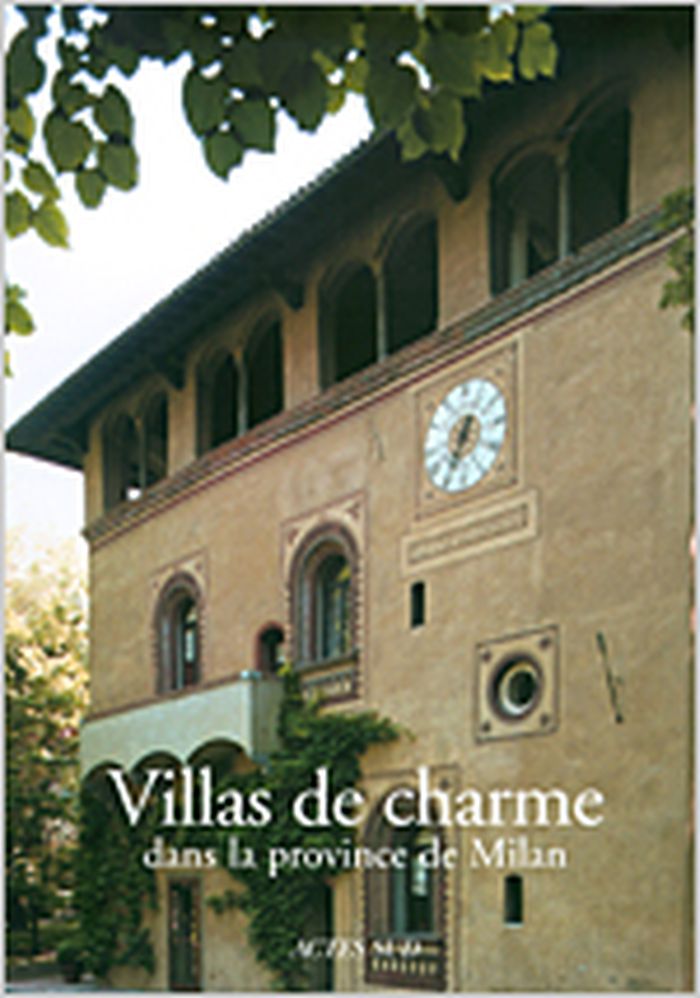$108.00
(disponible sur commande)
Résumé:
Entre le XVIe et le XVIIIe siècle, la région de Milan connaît une intense période d’art et d’architecture qui se manifeste à travers des villas : on voit éclore en effet un nombre important de résidences réalisées par une aristocratie éclairée. Aboutissement des activités productives du territoire, les villas étaient une synthèse d’exigences économiques, expressives et(...)
Villas de charme dans la province de Milan
Actions:
Prix:
$108.00
(disponible sur commande)
Résumé:
Entre le XVIe et le XVIIIe siècle, la région de Milan connaît une intense période d’art et d’architecture qui se manifeste à travers des villas : on voit éclore en effet un nombre important de résidences réalisées par une aristocratie éclairée. Aboutissement des activités productives du territoire, les villas étaient une synthèse d’exigences économiques, expressives et symboliques, mais définissaient également un style de vie et une vision du monde : une philosophie du “vivre sain” en contact avec la nature, au milieu des études et des plaisirs tournés vers un otium foisonnant. Les “ville di delizia” (nous devons cette appellation du XVIIIe siècle à Marc’Antonio Dal Re et à Pietro Verri) représentent un phénomène marquant de l’histoire de l’architecture et de la décoration et, plus généralement, de l’histoire de la culture et du goût : le patriciat de la grande ville lombarde (sans seigneur et sans cour) a souhaité projeter ses propres attentes et se célébrer lui-même dans ces villas.
Histoire jusqu’à 1900
$115.00
(disponible sur commande)
Résumé:
The discovery of and excavations at Pompeii in the second half of the eighteenth century not only provided historians with a trove of information about ancient Roman civilization but also fired artists' imaginations and inaugurated the vogue for the "Pompeian style" that so influenced the West in the nineteenth century. This book reproduces, along with commentary, "Le(...)
Dessin d’architecture
septembre 2002, Los Angeles
Houses and monuments of Pompeii : the works fo Fausto and Felice Niccolini
Actions:
Prix:
$115.00
(disponible sur commande)
Résumé:
The discovery of and excavations at Pompeii in the second half of the eighteenth century not only provided historians with a trove of information about ancient Roman civilization but also fired artists' imaginations and inaugurated the vogue for the "Pompeian style" that so influenced the West in the nineteenth century. This book reproduces, along with commentary, "Le case i monumenti di Pompeii" (1854) of Fausto and Felice Niccolini, the first work to present completely and systematically all the public and private buildings so far excavated in Pompeii. It features the wondrous watercolors the Niccolinis created to document Pompeii and is thus a beautiful and essential tool in understanding the excavated remains themselves and how the modern archaeologists perceived and recorded the ancient world. These reproduced drawings of the excavations are accompanied by texts that explain the documents by the Niccolinis, as well as the evolution of the Pompeian style in Europe, the pictorial representation of Pompeii in the nineteenth century from engravings to photographs, and the evolving styles of archaeological documentation.
Dessin d’architecture
$115.00
(disponible sur commande)
Résumé:
Traditionally a critical component of the education of any architect was to draw the ruins of ancient Rome, reconstructing either from ancient sources or, more often, pure fantasy, what the original structures must have looked like. From this training emerged generations of architects imbued with the aesthetic ideals that would form the Neoclassical and Beaux-Arts(...)
Dessin d’architecture
septembre 2002, Los Angeles
Ruins of Ancient Rome : the drawings of French architects who won the Prix de Rome 1786-1924
Actions:
Prix:
$115.00
(disponible sur commande)
Résumé:
Traditionally a critical component of the education of any architect was to draw the ruins of ancient Rome, reconstructing either from ancient sources or, more often, pure fantasy, what the original structures must have looked like. From this training emerged generations of architects imbued with the aesthetic ideals that would form the Neoclassical and Beaux-Arts building styles. Drawings of the ruins of ancient Rome made by French "Prix de Rome" architects from 1786 through 1924 are reproduced. Accompanied by text that explains how the Prix de Rome was awarded and the significance of the prize in the history of architecture, as well as how the study of ancient models formed the basis for nineteenth- and early twentieth-century architectural styles, these drawings provide an understanding of how the modern imagination recorded and transformed ancient fragments into a modern architectural idiom.
Dessin d’architecture


